Mastering Laurel Shrubs
Embarking on a journey through the diverse world of laurel bushes, I will unravel the mysteries surrounding these evergreen shrubs. From their versatile growth habits to the aesthetic appeal they bring to garden spaces, laurel bushes are a favorite among both professional landscapers and amateur gardeners. As I explore the different types of laurel shrubs, their unique attributes, and care requirements, I’ll gain insights into creating vibrant living walls, ensuring privacy, and enhancing my garden’s overall beauty.
Understanding Laurel Shrubs
The laurel family (Lauraceae) consists of over 50 genera and over 3000 species of aromatic evergreen flowering plants. Laurel bushes are characterized by elliptical, leathery, often glossy leaves with entire margins. Most varieties produce small flowers in the spring followed by berry-like fruits.
Laurel bushes share some common traits like their evergreen foliage, tolerance to pruning, adaptability to various soil types, and moderately fast growth rate. Their gnarly branching habits and bushy nature make them excellent choices for hedges and privacy screens. Many laurel varieties can grow over 15 feet tall and wide in just a few years. Their dense growth also makes them effective windbreaks and sound barriers.
General Characteristics of Laurel Shrubs
The evergreen leaves of laurel bushes come in a range of shapes and sizes, from slender and spiny to broad and feathery. The foliage transforms throughout the seasons, with vibrant new spring growth followed by rich summer tones and striking fall hues in some varieties.
Laurel bushes thrive in partial shade to full sun and tolerate a wide range of soil conditions including clay, loam, sand, acidic, and alkaline soils. Most are quite hardy, tolerating temperatures as low as -20°F once established. They have non-invasive root systems making them great companion plants for landscapes and flower beds.
For more information about Kitchen Gardens you can visit: Brussels Sprout Plant Stages
Choosing the Right Laurel Shrubs
With dozens of laurel varieties to choose from, I carefully consider the growing conditions in my landscape and my overall goals. Cold hardy varieties like cherry laurel and alpine laurel are great choices for colder climates. Texas mountain laurel and Carolina cherry laurel prefer hot and humid summer weather.
Aucuba and Japanese laurel offer vibrant variegated foliage to brighten shady garden spots. Fast-growing cherry laurel or Portuguese laurel make quick-growing screens. I evaluate toxicity concerns because I have pets and livestock that may ingest the leaves or berries. Also I consider ultimate size, growth rate, seasonal interest, and desired maintenance level.
9 Types of Laurel Bushes

Cherry Laurel (Prunus laurocerasus)
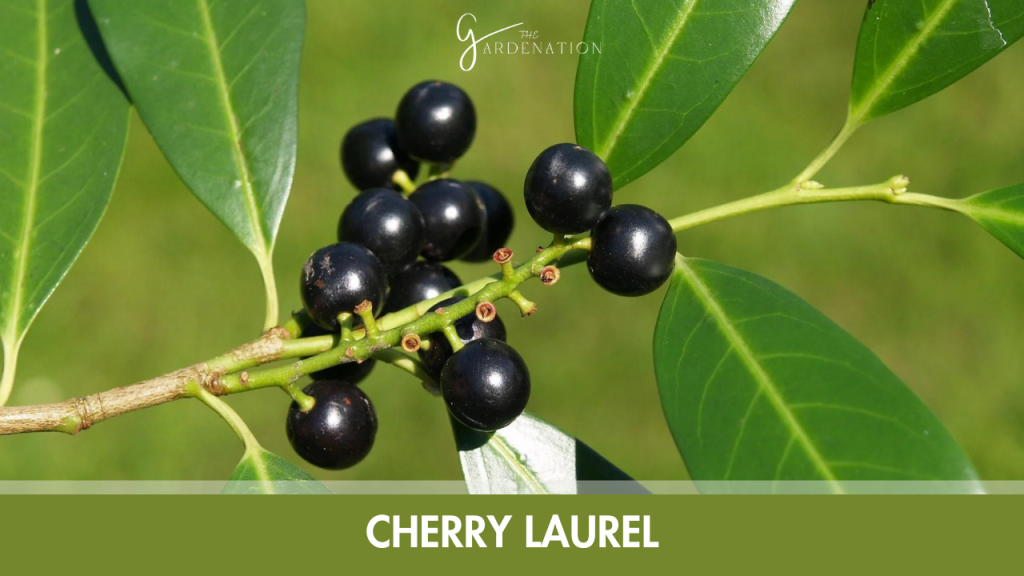
Cherry laurel thrives in full sun to partial shade and medium to wet soil. It’s tolerant of heat, humidity, air pollution, salt, and deer. Without pruning, cherry laurel can reach 30 feet tall and wide. Toxic compounds in the leaves and seeds can cause illness or death if ingested. I identify cherry laurel by its glossy, elliptical leaves with finely serrated edges.
Mountain Laurel (Kalmia latifolia)
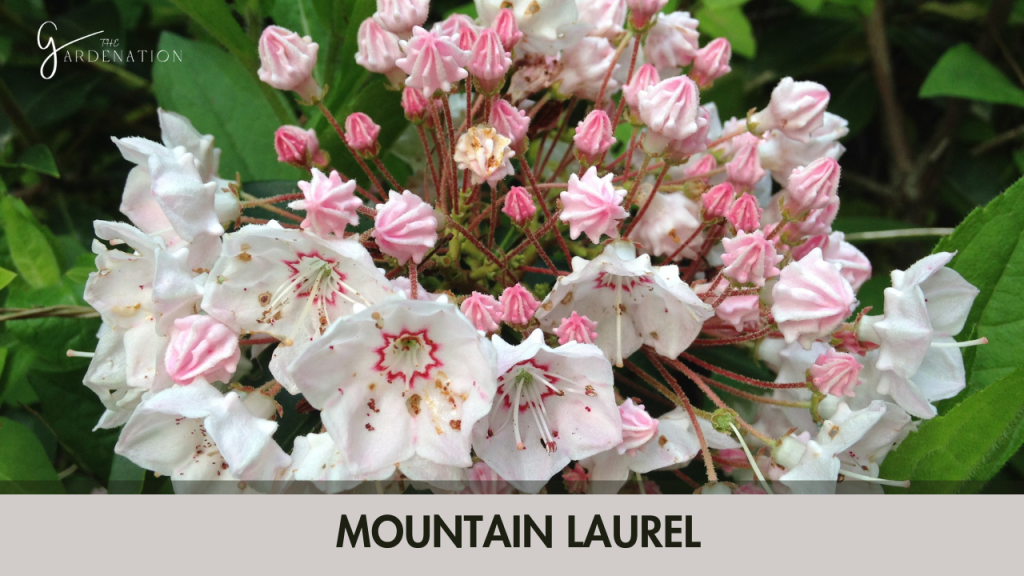
Mountain laurel grows best in well-drained, acidic soil and dappled shade provided by pine and oak trees. It features showy spring blooms and can reach 15 feet tall and wide. I companion plant it with rhododendron, azalea, blueberry, or huckleberry shrubs for optimal growing conditions.
Portuguese Laurel (Prunus lusitanica)
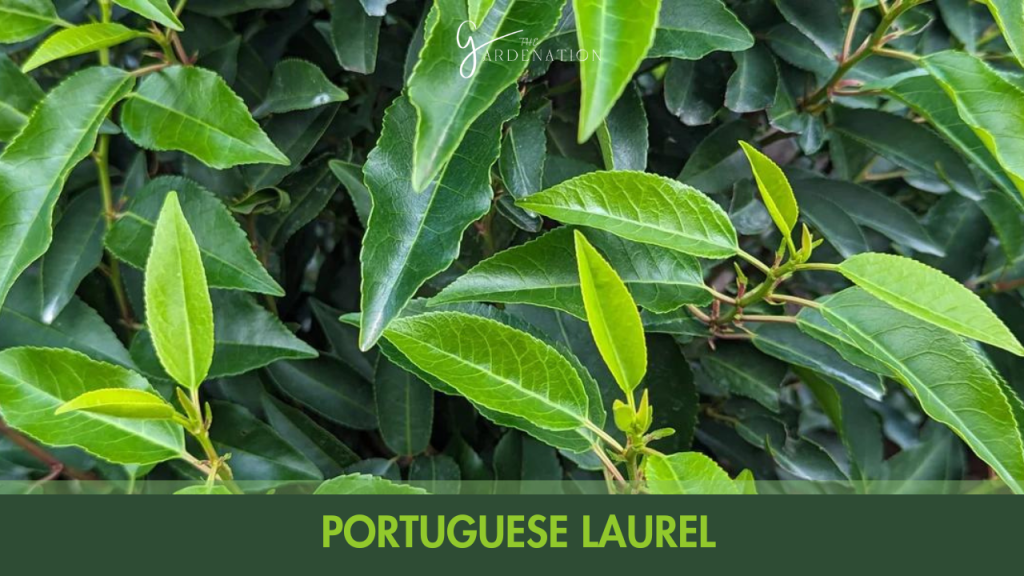
Portuguese laurel tolerates a wide range of conditions including full sun, coastal exposure, heat, humidity, and air pollution. It can grow up to 50 feet tall in frost-free climates. I propagate by seed or semi-hardwood summer cuttings. I use caution when planting near walkways as the roots can damage pavement.
Texas Mountain Laurel (Dermatophyllum secundiflorum)
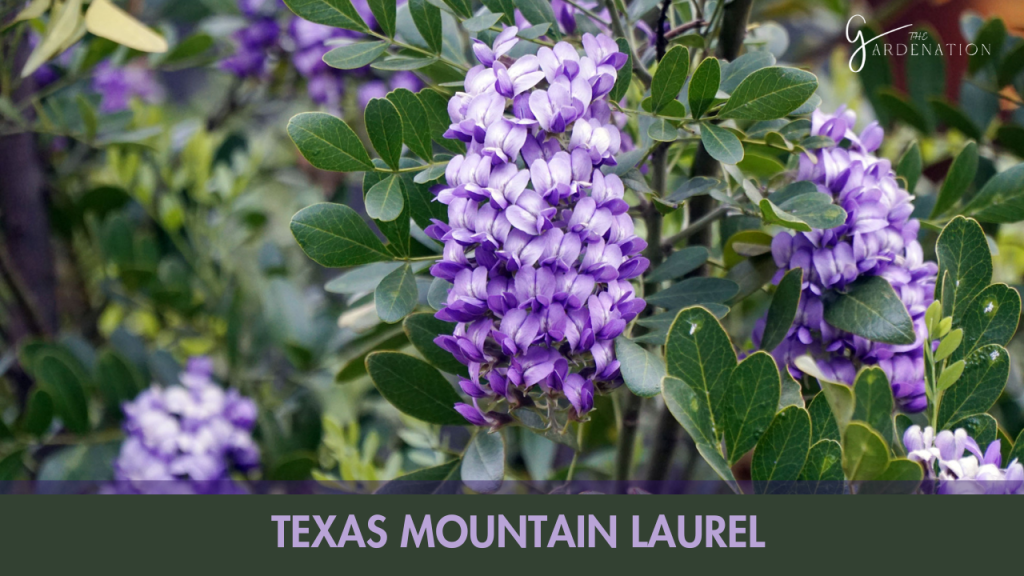
Texas mountain laurel thrives in hot, arid climates in full sun and well-drained alkaline soil. It’s identified by clusters of fragrant purple flowers that bloom in spring against evergreen foliage. All parts of this slow-growing shrub contain toxins that can be harmful if ingested.
Japanese Laurel (Aucuba japonica)
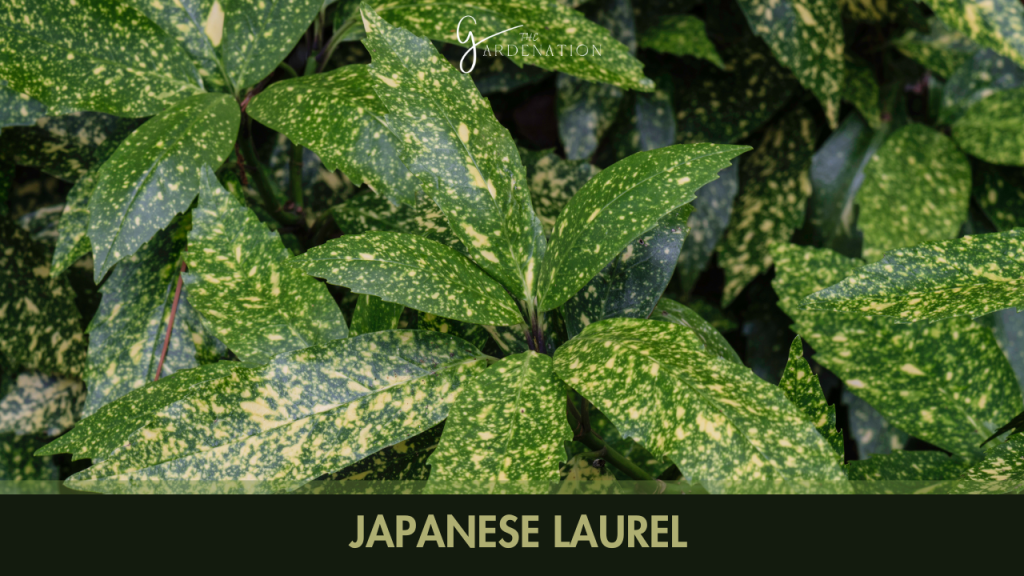
Japanese laurel grows well in full shade to partial sun. Its leaves transform throughout the seasons from rich green to a mix of yellow and green. It maintains an attractive shape with little pruning due to its slow-to-average growth rate of 1-2 feet per year.
California Bay (Umbellularia californica)
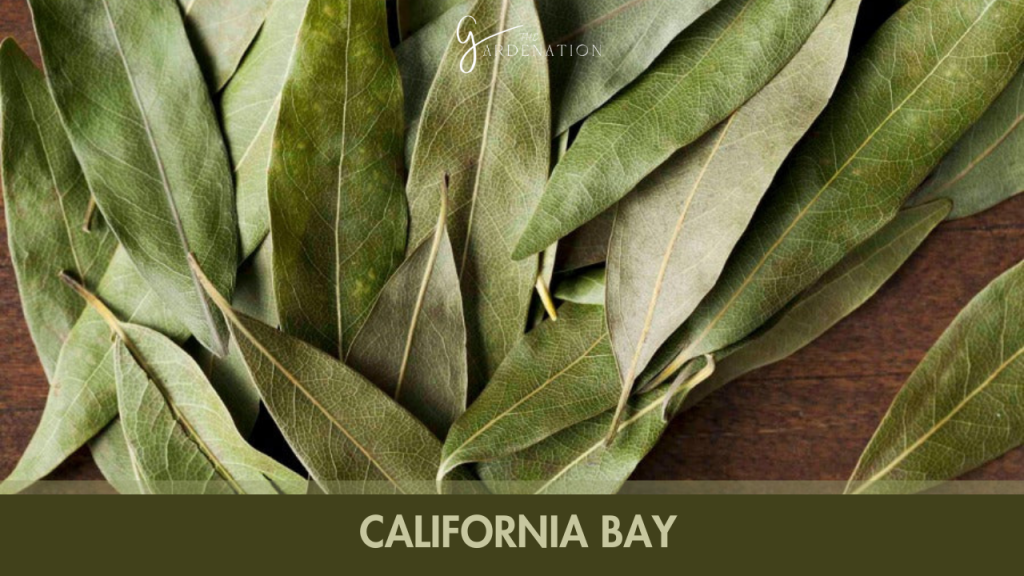
California bay laurel thrives in coastal climates with cool, moist summers and tolerates shade to partial sun exposure. Crushed leaves emit a sweet, spicy aroma. Leaves and fruits are used for culinary purposes. It can grow over 60 feet tall or be maintained as a compact hedge.
Carolina Cherry Laurel (Prunus caroliniana)
Carolina cherry laurel naturally grows as an understory plant in partially shaded oak-hickory forests. All parts of this plant contain cyanide and should not be ingested. I cultivate in organically rich, medium moisture, well-drained acidic soil. I prune in late winter to control size and maintain compact growth habit.
Bog Laurel (Kalmia polifolia)
Bog laurel grows 1-2 feet tall in cold, wet acidic bogs and swamps. Its light pink buds open to white flowers in late spring. Overingestion can cause illness in livestock and humans due to toxicity. I propagate by seed or stem cuttings.
Alpine Laurel (Kalmia microphylla)
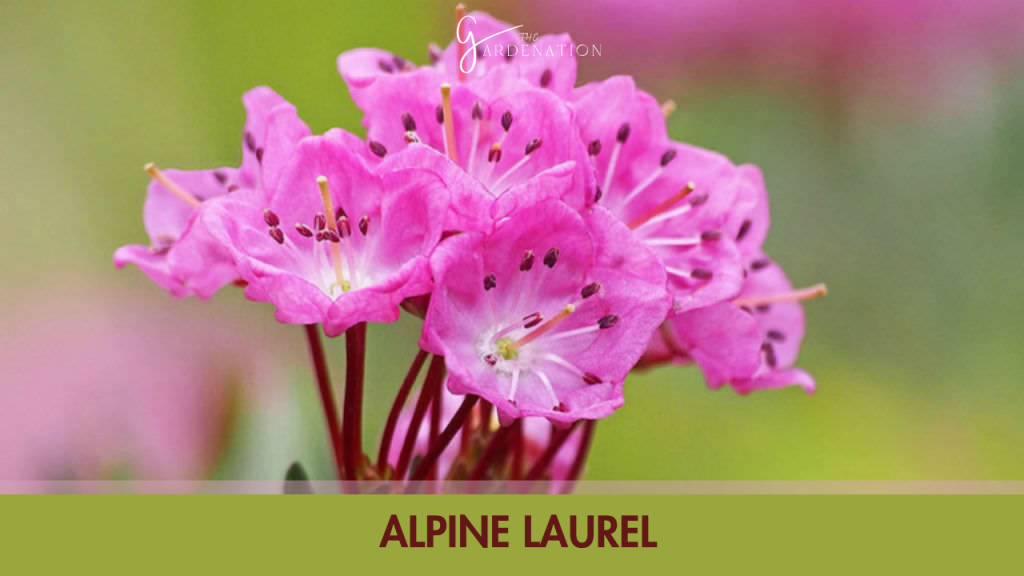
Alpine laurel thrives in cool, moist, acidic soil in partly shaded mountainous conditions. The 1-3 foot shrubs produce abundant clusters of deep pink flowers in early summer. I prune immediately after flowering to encourage new growth and next season’s flower buds.
Care and Maintenance Tips

I prune laurel bushes in early spring before the new growth emerges to maintain their natural shape and size. I remove crossing branches and any diseased or damaged wood. I water thoroughly after planting and during the first year to establish deep roots. Thereafter, I only water during extended drought periods. I test soil pH every 2-3 years and amend acidic varieties with sulfur or aluminum sulfate to maintain proper acidity levels for optimal growth.
I address leaf spot fungus with fungicides. I try to improve drainage for shrubs with yellowing leaves indicating overwatering. I apply chelated iron if new growth appears yellow and pale indicating a nutrient deficiency. Sometimes, I contact a local nursery or extension office for advice on treating insect infestations properly.
Frequently Asked Questions
What are the optimal growing conditions for laurel bushes?
Laurel bushes grow best in organically rich, well-drained, slightly acidic soil and light to partial shade. Amend soil with compost prior to planting. Mulch around the base to conserve soil moisture and provide insulation.
How can I identify and manage toxicity concerns with laurel bushes?
Many laurel species contain glycosides that release cyanide when ingested, causing vomiting, dilated pupils, hyperventilation, and death in extreme cases. Identify toxicity by warning labels at time of purchase. Monitor pets and livestock and remove ingested plant parts from their mouths. Seek emergency veterinary care if poisoning is suspected.
What are some good companion plants for laurel bushes?
Laurel bushes pair nicely with rhododendrons, azaleas, ferns, hostas, astilbes, bleeding hearts, coral bells, hellebores, and other shade-loving perennials. Underplant laurel hedges with bulbs like tulips, daffodils or crocus for seasonal interest.
Conclusion
Armed with a wealth of knowledge about laurel bushes, I am now equipped to make informed decisions about choosing, cultivating, and maintaining these versatile evergreen shrubs. Whether I seek privacy, wildlife attraction, or a vibrant garden backdrop, laurel bushes offer a myriad of options. As I navigate through the various types and care guidelines, I have discovered the joy of transforming my garden into a lush haven with the enduring beauty of laurel bushes.
Meta Description
Laurel shrubs types, growth habits, care and maintenance for vibrant, privacy screening shrubs with tips on watering, pruning, troubleshooting, and toxicity.


One Comment